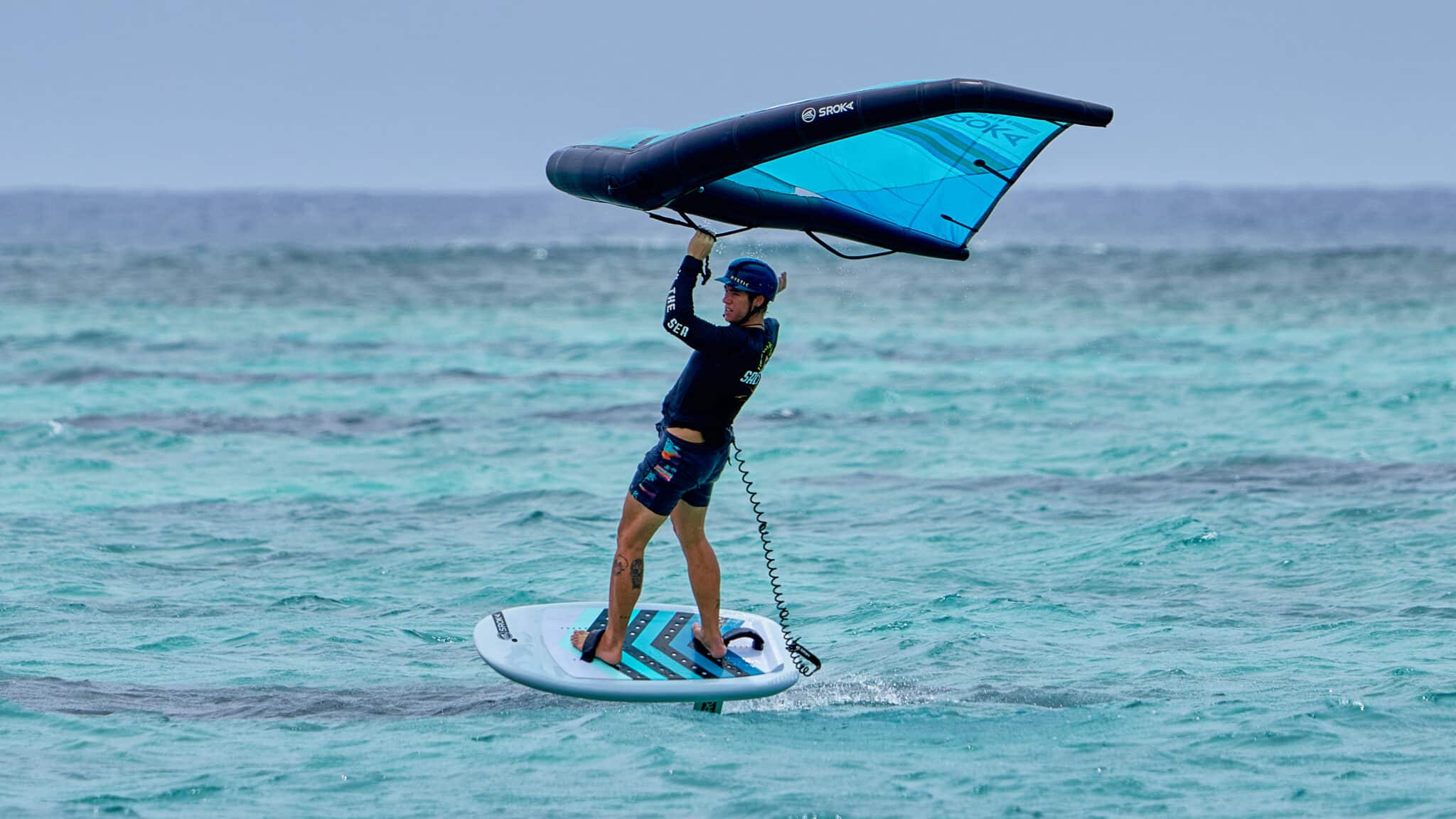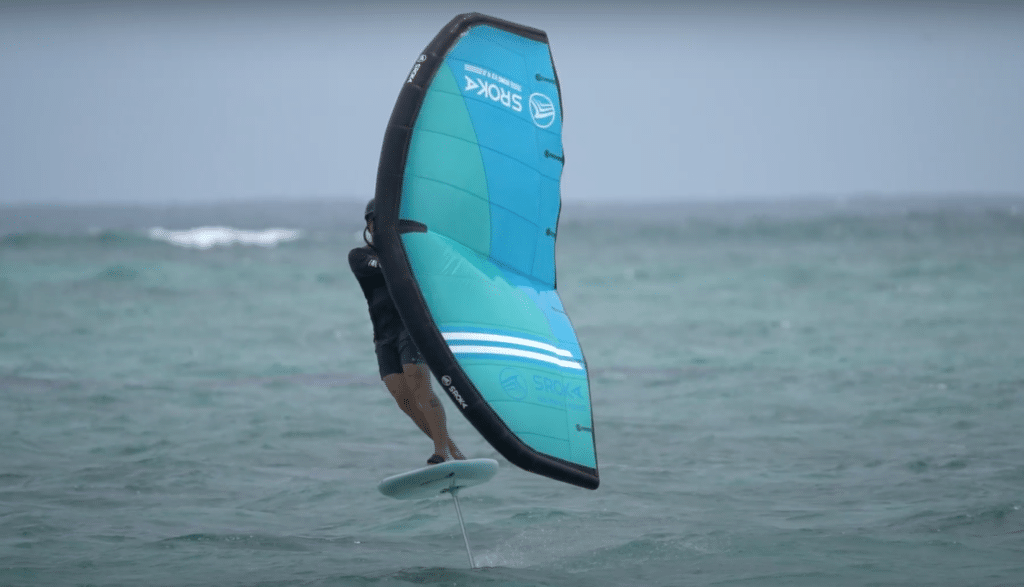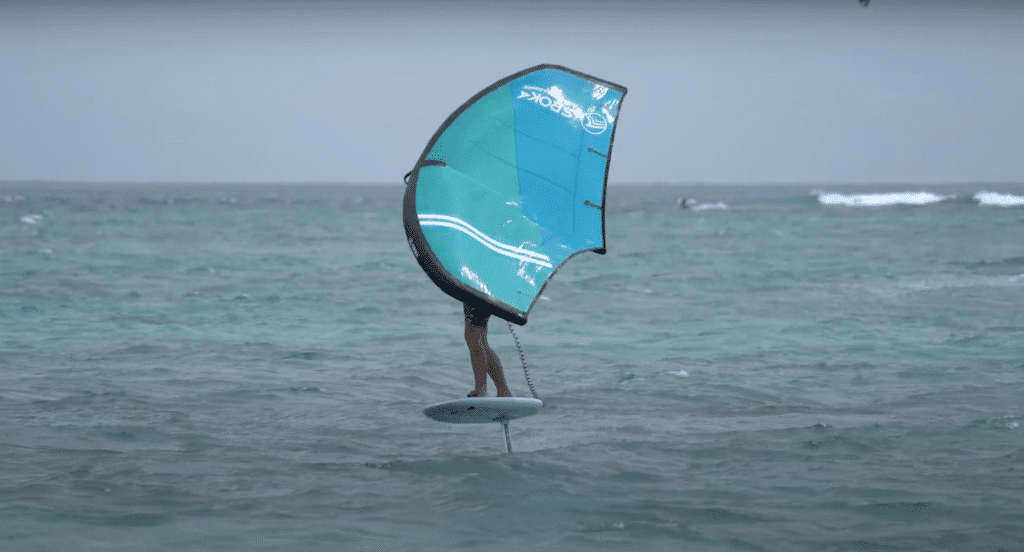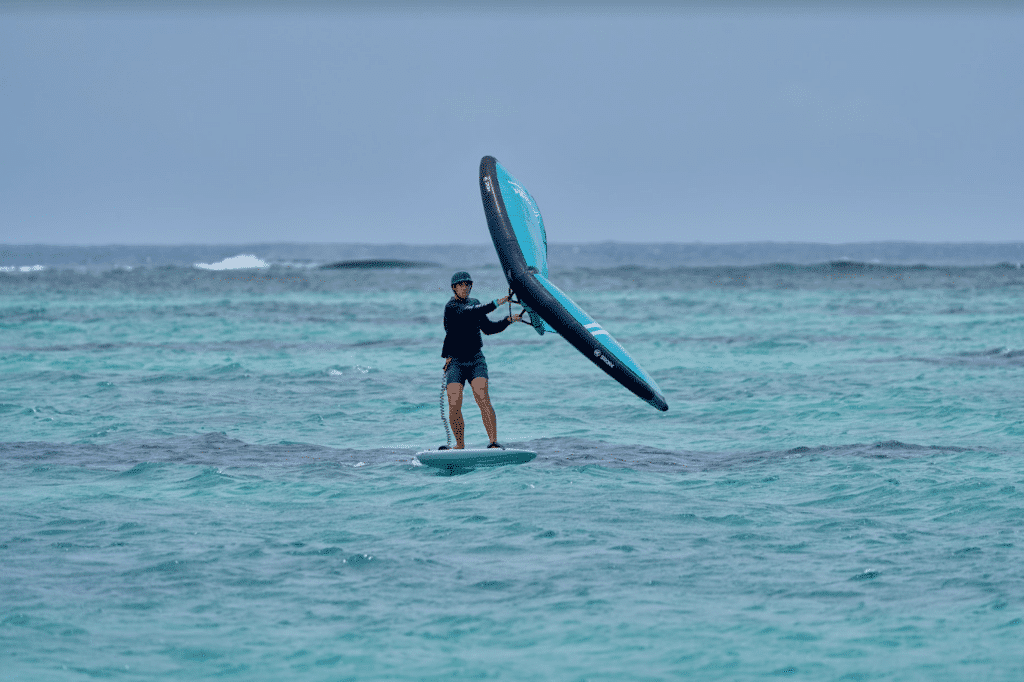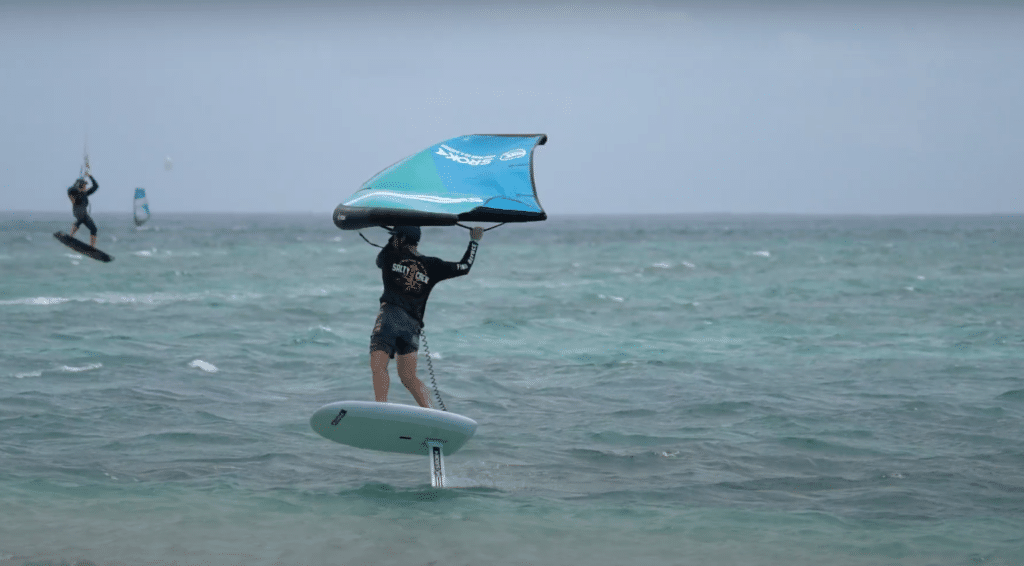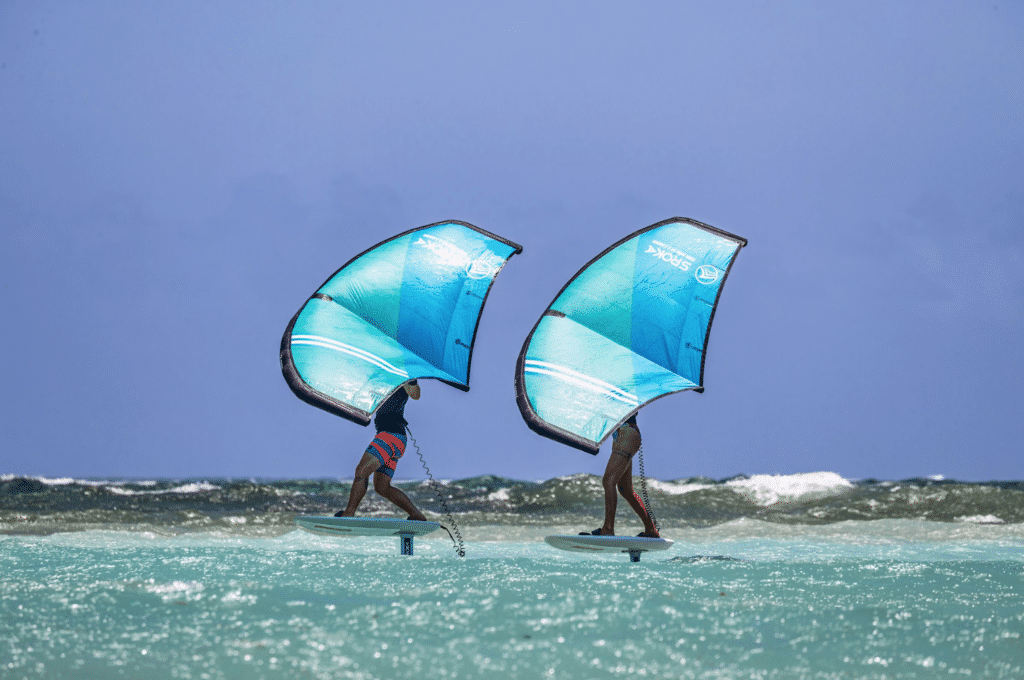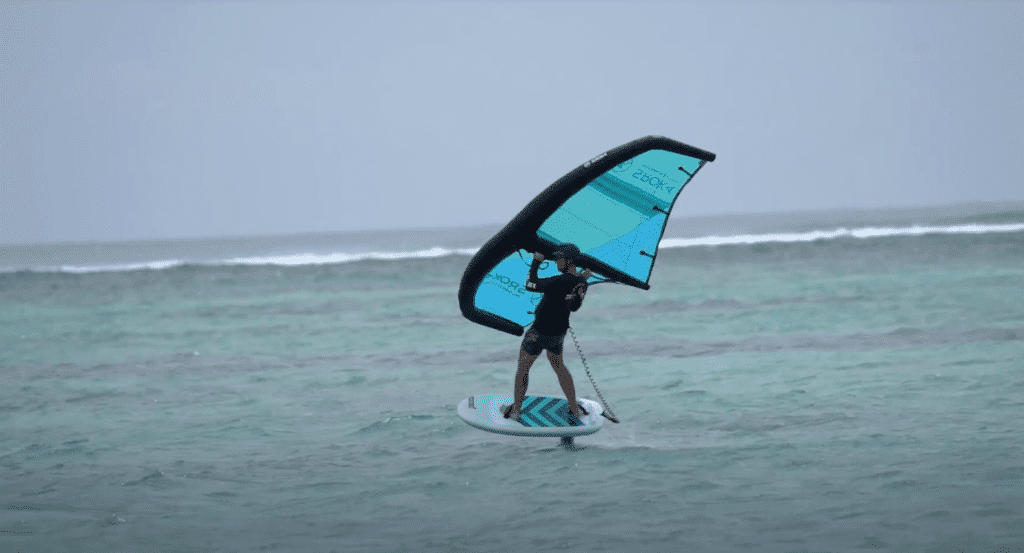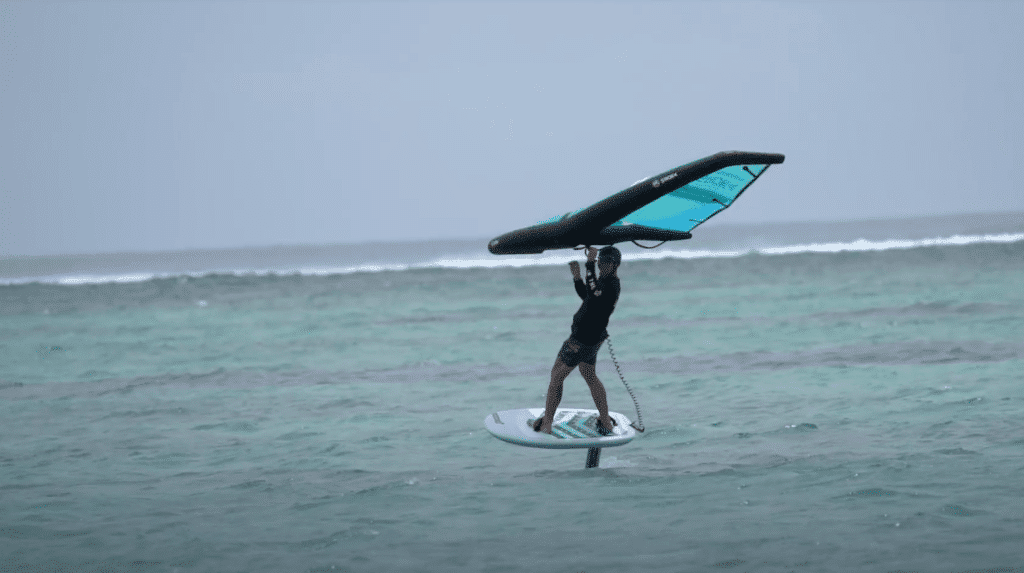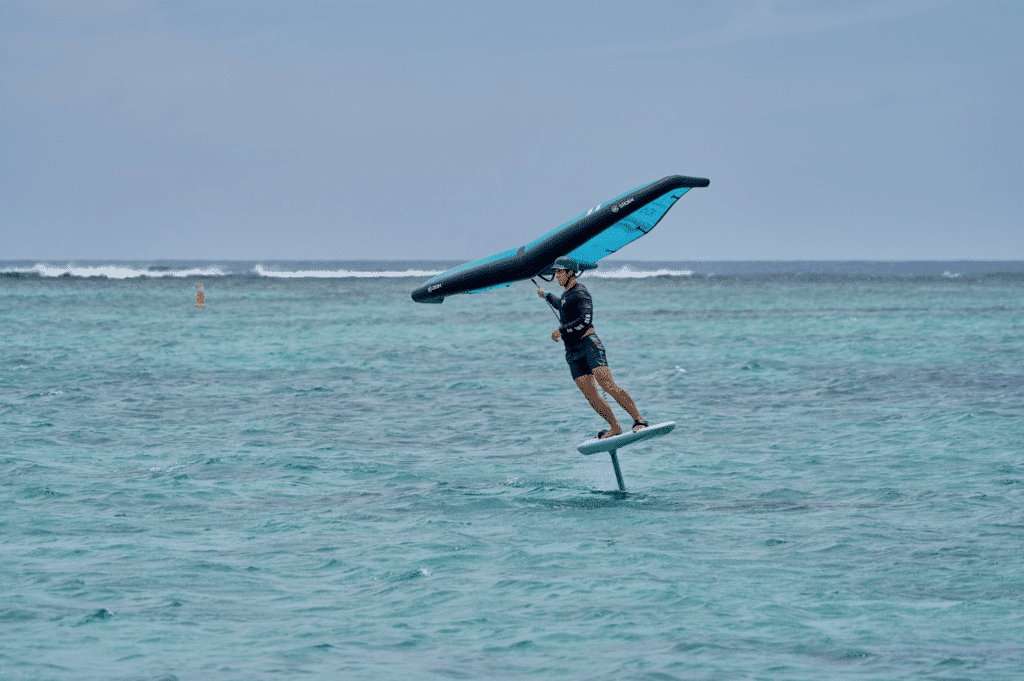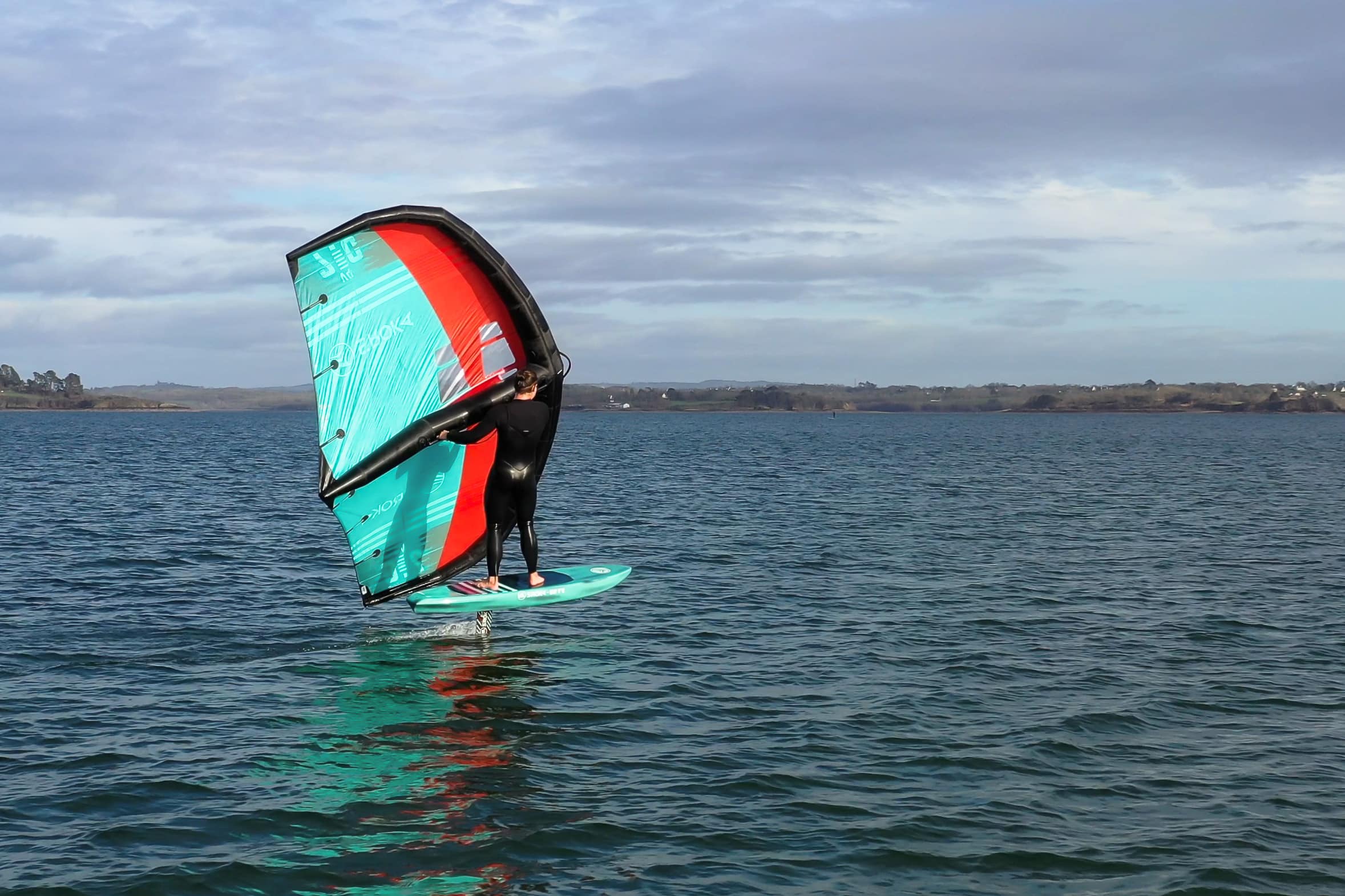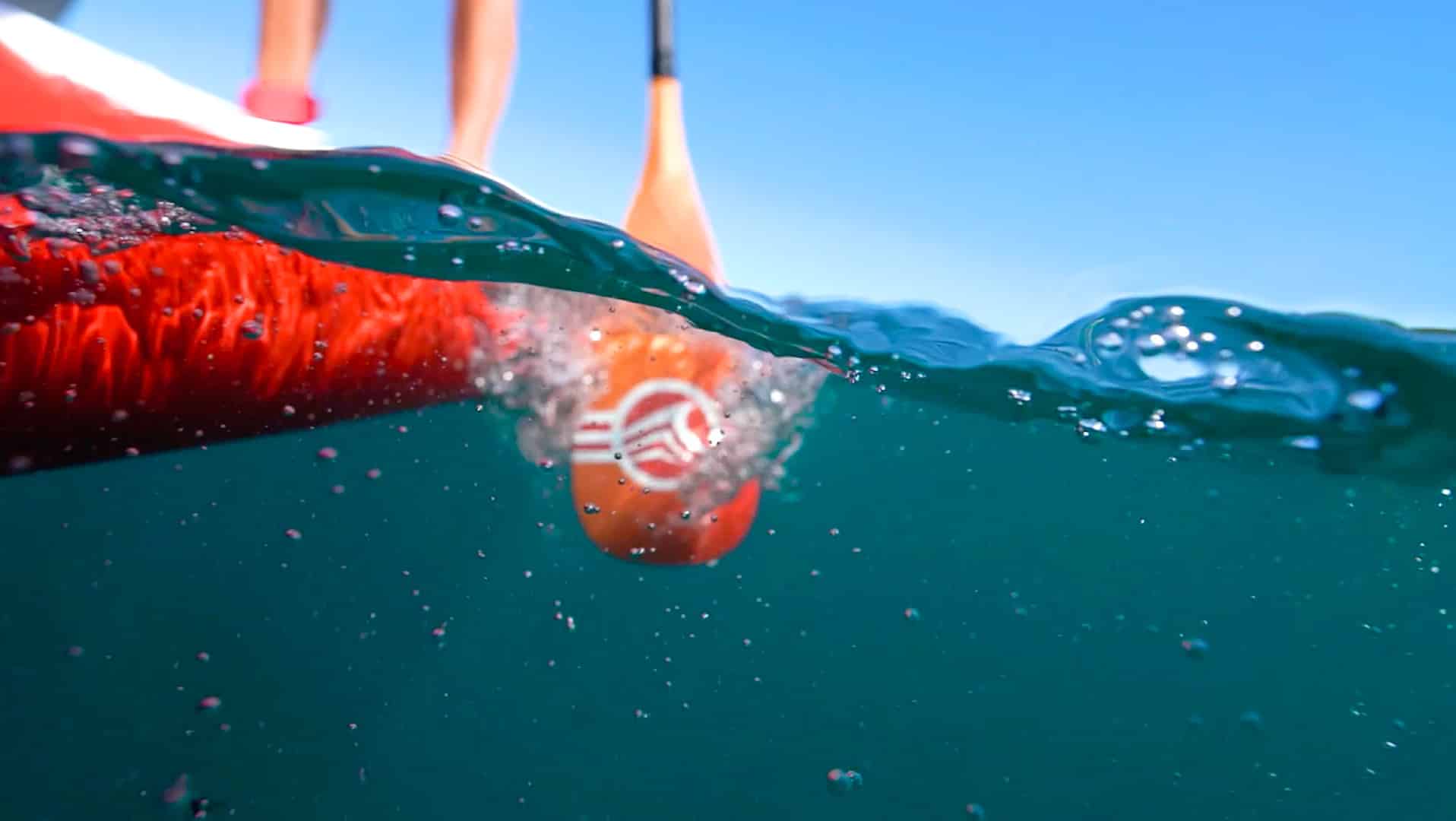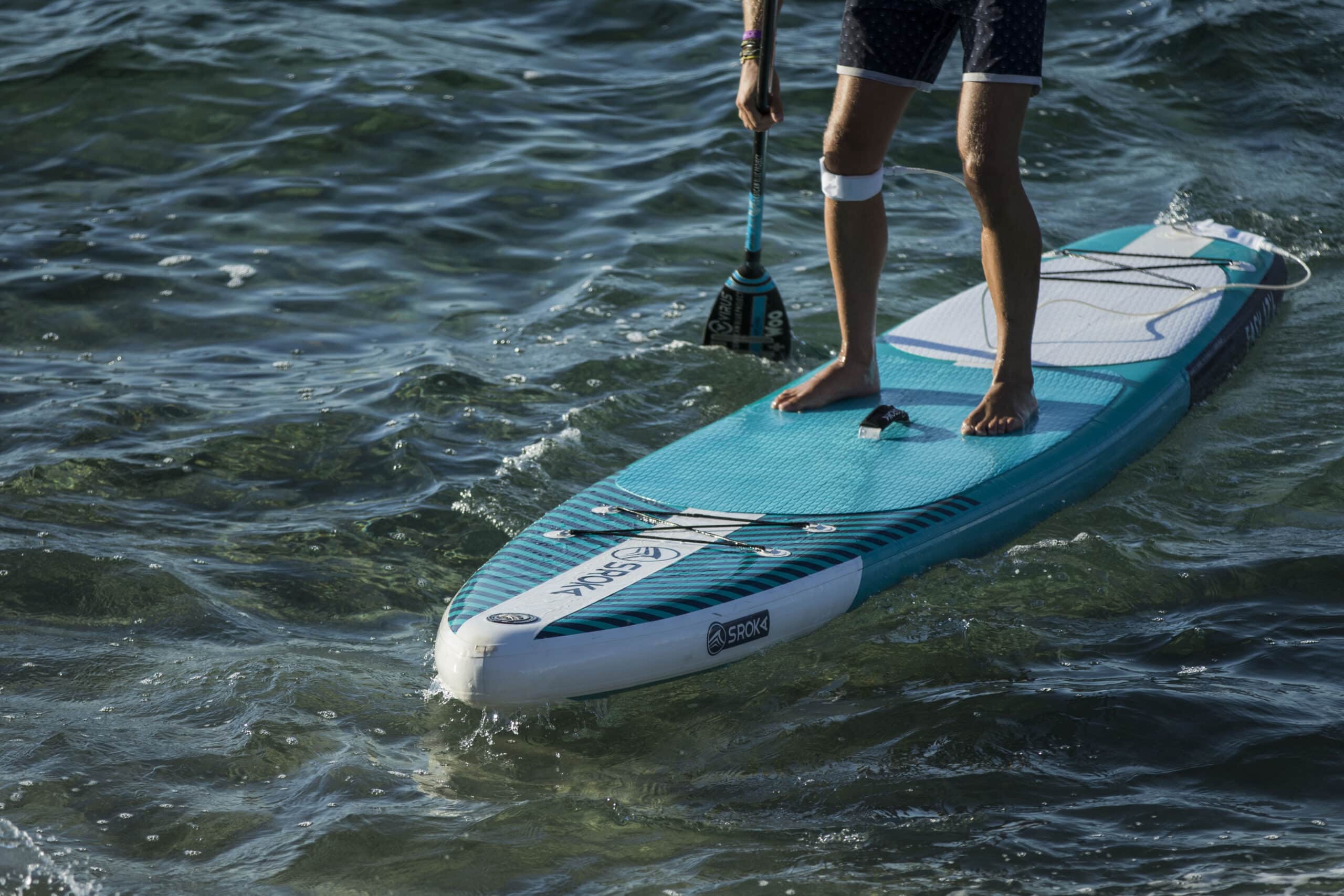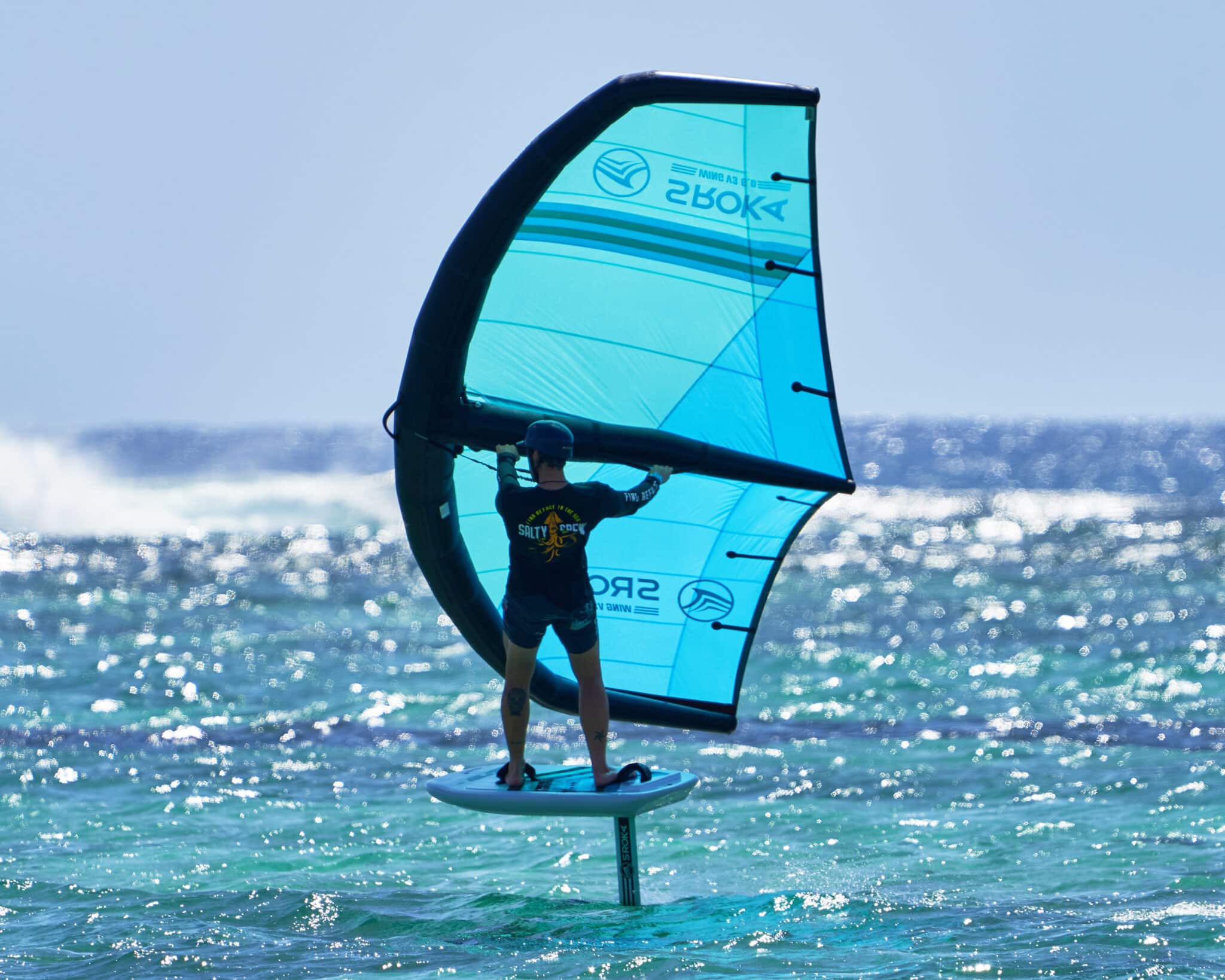
The prerequisites for tacking in a wingfoil
- Be comfortable in wingfoil and master the basics : Pullboards, accelerate, change direction quickly, be balanced on the board whatever the conditions, know how to jibe, sail in toeside and switch.
- Start with the right equipment: To learn how to tack, you need to be sufficiently canvassed, or even over-steered, in order to have a good speed of movement.
- Learning on a calm body of water: Too rough water can create imbalances and make it more difficult to learn how to tack. So choose a body of water that is as flat as possible to learn how to tack.

